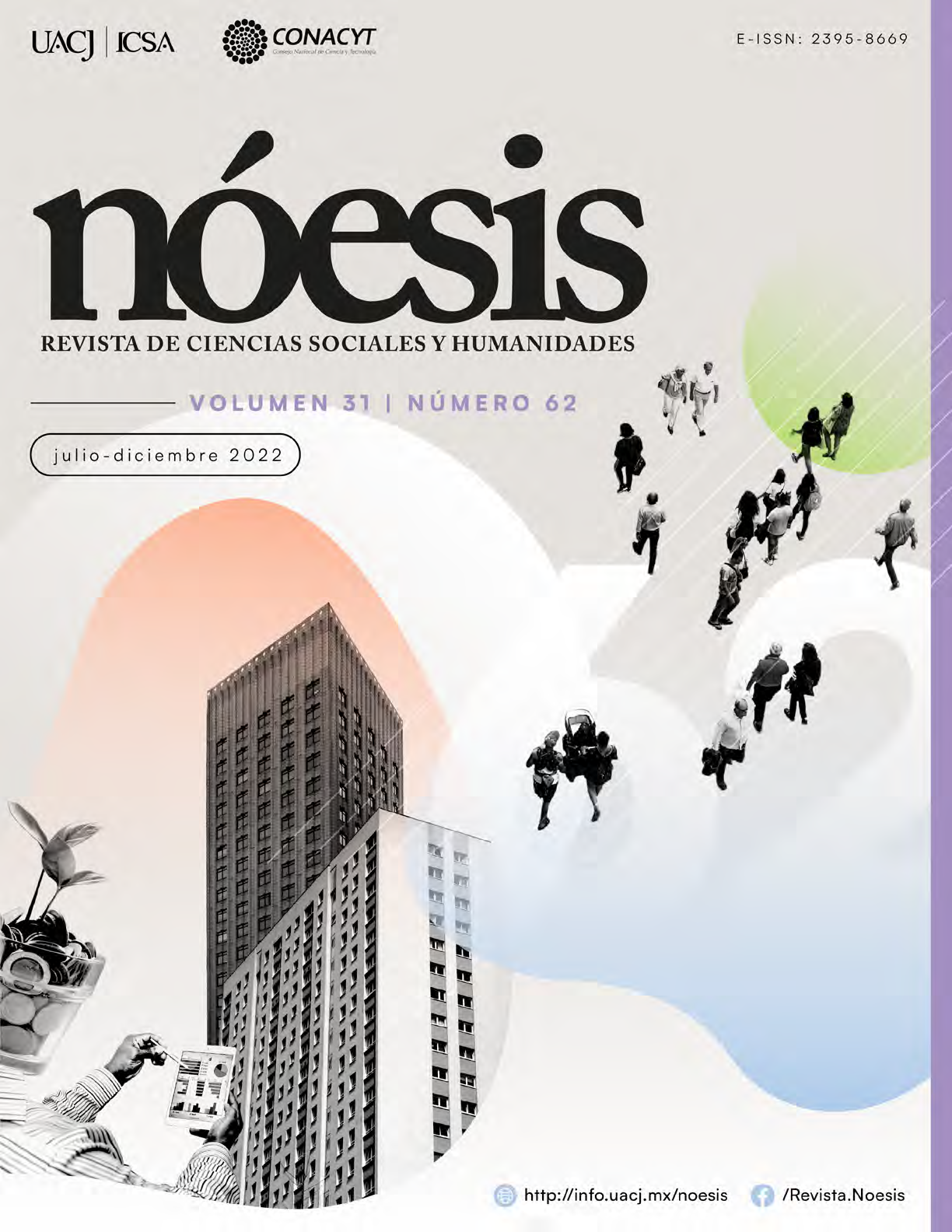Productive capacity and full employment: a policy alternative
Main Article Content
Abstract
The aim of this paper is to propose the rate of productive capacity utilization as the economic policy target to fight unemployment. The idea behind this proposal is aimed at re-installing the management of effective demand as the main tool to reduce unemployment. This proposal attempts to replace the dominant theoretical framework, based on the neo-Keynesian labor market, which imposes inflation as the main restriction to reduce unemployment. We asses our proposal using data of six economies and several econometric techniques. The results indicate that the percentage of productive capacity utilization can indeed be a good substitute of the rate of unemployment. Moreover, according to the results of our panel data estimations, we identify that effective demand variables, like capital accumulation, affect productive capacity.
Downloads
Article Details

This work is licensed under a Creative Commons Attribution-NonCommercial-ShareAlike 4.0 International License.
References
Arestis, P. y Sawyer, M. (2005). Aggregate demand, conflict and capacity in the inflationary process. Cambridge Journal of Economics, 29(6), 959–974. https://doi.org/10.1093/cje/bei079
Aklin, M., Kern, A. y Negre, M. (2021). Does central bank independence increase inequality? (Policy Research Paper 9522), World Bank. http://hdl.handle.net/10986/35069
Ball, L. (2015, Mayo). Comment on ‘Inflation and activity’ by Olivier Blanchard, Eugenio Cerutti
and Lawrence Summers. ECB forum on Central Banking, 47-52. http://www.econ2.jhu.edu/People/Ball/BlanchardComment.pdf
Bernal, J. (2008). La tasa de crecimiento garantizada de Harrod como ley de crecimiento económico: una comprobación empírica. Cuadernos de Economía, 48, 57-88.
Bobeica, E. Ciccarelli, M. y Vansteenkiste, I. (2021). The changing link between labor cost and price inflation in the United States. (Working Paper Series 3583), European Central Bank. https://www.ecb.europa.eu/pub/pdf/scpwps/ecb.wp2583~50c8fa6c72.en.pdf
Blanchard, O. (2016). The US Phillips Curve: back to the 1960s? (Policy Brief 16-1), Peterson Institute for International Economics. https://www.piie.com/publications/policy-briefs/us-phillips-curve-back-60s
Blanchard, O. (2017). Should we get rid of the Natural Rate Hypothesis? (Working Paper Series 24057), NBER. https://www.nber.org/papers/w24057
Blecker, R. y Setterfield, M. (2019). Heterodox economics. Models of demand, distribution and growth. Edward Elgar.
Bosworth, B. y Collins, S. (2007). Accounting for growth: comparing China and India. (Working Paper Series 12943), NBER. https://www.nber.org/system/files/working_papers/w12943/w12943.pdf
Calderón, C., Vázquez, B. y López, L. (2019). Evaluación de la política industrial durante el periodo de apertura económica en México. Nóesis. Revista de Ciencias Sociales, 28-55, 162-184. https://doi.org/10.20983/noesis.2019.1.8
Carlin, W. y D. Soskice (2015). Macroeconomics. Imperfections, institutions and policies. Oxford University Press.
Cruz, M., Sánchez, A. y Amann, E. (2011). Mexico: food price increases and growth constraints. CEPAL Review, 105, December, 73-86. http://hdl.handle.net/11362/11538
Davidson, P. (2007). John Maynard Keynes. Palgrave Macmillan.
Del Negro, M., Lenza, M., Primiceri, G. y Tambolatti, A. (2020). What’s up with the Phillips curve? Brooking Papers in Economic Activity, Spring, 301-373. https://www.brookings.edu/bpea-articles/whats-up-with-the-phillips-curve/
García, L. y Cruz, M. (2017). Desempleo en América Latina: ¿flexibilidad laboral o acumulación de capital? Problemas del Desarrollo, 48(189), 31-54. https://doi.org/10.22201/iiec.20078951e.2017.189.57821
Hamilton, J. (2017). Why you should never use the Hodrick-Prescott filter. (Working Paper Series 23429), NBER. https://www.nber.org/papers/w23429
Harrod, R. (1939). An essay in dynamic theory. The Economic Journal, 49(143), 14-33.
Hein, E. y Schoder, C. (2011). Interest rates, distribution and capital accumulation – A post-Kaleckian perspective on the US and Germany. International Review of Applied Econometrics, 25(6), 693-723. https://doi.org/10.1080/02692171.2011.557054.
Heise, S., Karahan, F. y Sahin, A. (2020). The missing inflation puzzle: the role of the wage-price pass-through. (Working Paper Series 27663), NBER. https://www.nber.org/papers/w2766.
Hooper, P., Miskhin, F. y Sufi. A. (2019). Prospects for inflation in a high-pressure economy. Is the Phillips curve dead or is it just hibernating? (Working Paper Series 25792), NBER. https://www.nber.org/papers/w25792
Hoshi, T. and Kashyap, A. (2020). The great disconnect: the decoupling of wage and price inflation in Japan. (Working Paper Series 27732), NBER. https://www.nber.org/papers/w27332.
Kaldor, N. (1966). Strategic factors in economic development. Cornell University Press.
Kalecki, M. (1944), Three ways to full employment. En J. Osiatynski (ed.), [1990], Collected works of Michal Kalecki, Volume I. Oxford University Press.
Kalecki, M. (1960). Unemployment in underdeveloped countries. En J. Osiatynsky (ed.), [1993], Collected works of Michal Kalecki, Vol. V. Oxford University Press.
Kalecki, M. (1963). Introduction to the theory of growth in a socialist economy. En J. Osiatynski (ed), [1993], Collected works of Michal Kalecki, Volume IV. Oxford University Press.
Kalecki, M. (1966) The difference between crucial economic problems of developed and underdeveloped non-socialist economies. En J. Osiatynsky (ed.) [1993], Collected works of Michal Kalecki, Vol. V. Oxford University Press.
Kalecki, M. (1995). Teoría de la dinámica económica. Fondo de Cultura Económica.
Keynes, J. (1936). The general theory of employment, interest and money. Harcourt Brace and Company.
Krugman, P. (1994). The myth of Asia’s miracle. Foreign Affairs, 73(6), 62–75. https://www.foreignaffairs.com/articles/asia/1994-11-01/myth-asias-miracle
Lanau, S., Robles, A. y Toscani, F. (2018). Explaining inflation in Colombia: a disaggregated Phillips curve approach. (Working Paper Series 106), IMF. https://doi.org/10.5089/9781484354827.001
Madsen (2002). The causality between investment and economic growth. Economic Letters, 74, 157–163. https://doi.org/10.1016/S0165-1765(01)00549-3
Nikiforos, M. (2013). The (normal) rate of utilization at the firm level. Metroeconomica, 64(3), 513-538. https://doi.org/10.1111/meca.12016
Nikiforos, M. (2021). The endogeneity-to-demand of the national emergency utilization rate. (Working Paper 989), Levy Economics of Bard College. https://www.levyinstitute.org/publications/the-endogeneity-to-demand-of-the-national-emergency-utilization-rate
O' Shaughnessy, T. (2011), Hysteresis in unemployment. Oxford Review of Economic Policy, 27(2), 312 – 337. https://doi.org/10.1093/oxrep/grr018
Palazuelos, E. y R. Fernández, (2009). Demand, employment, and labour productivity in the European economies. Structural Change and Economic Dynamics, 20(1), 1-15. https://doi.org/10.1016/j.strueco.2008.08.001
Palley, T. (2021). Rethinking capacity utilization choice: the role of surrogate inventory and entry deterrence. (Working Paper 61), FMM. https://www.imk-boeckler.de/de/faust-detail.htm?sync_id=HBS-007941
Rochon, L. y Rossi, S. (2018). The relationship between inflation and unemployment: a critique to Friedman and Phelps. Review of Keynesian Economics, 6(4), 533-544. https://doi.org/10.4337/roke.2018.04.10
Sánchez-Juárez, I. (2011). Ralentización del crecimiento y manufacturas en México. Nóesis. Revista de Ciencias Sociales, 21(41), 137-172. https://doi.org/10.20983/noesis.2012.1.6
Shaikh, A. y Moudud, J. (2004). Measuring capacity utilization in OCDE countries: A cointegration method. (Working Paper 415), The Levy Economics Institute and College Bard. https://www.levyinstitute.org/pubs/wp415.pdf
Young, A. (1994). Lessons from the east asian NICS: a contrary view. European Economic Review, 38, 964–973. https://doi.org/10.1016/0014-2921(94)90132-5
Young, A. (1995). The tyranny of numbers: confronting the statistical realities of the East Asia growth experience. Quarterly Journal of Economics, 110, 641–680. https://doi.org/10.2307/2946695

